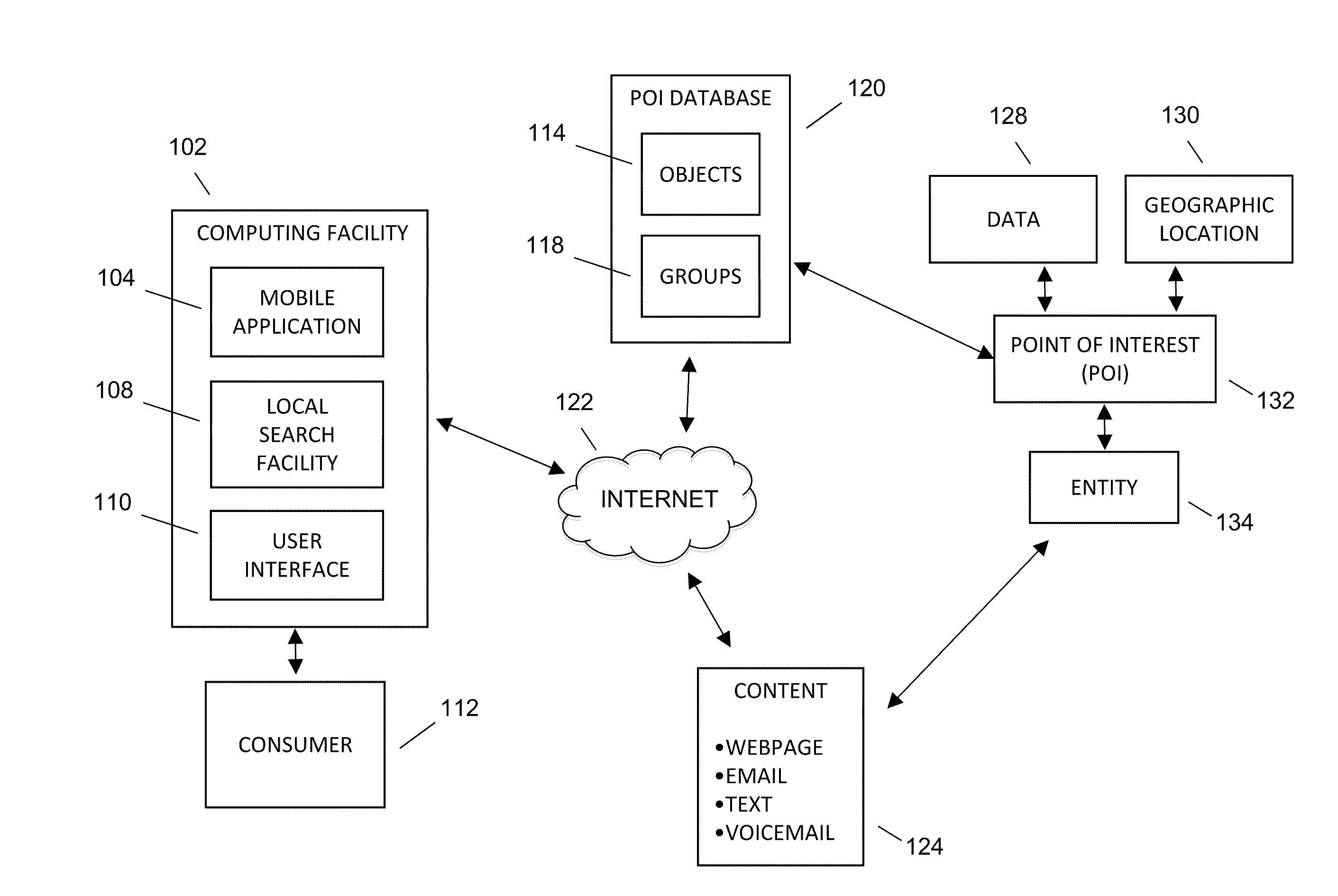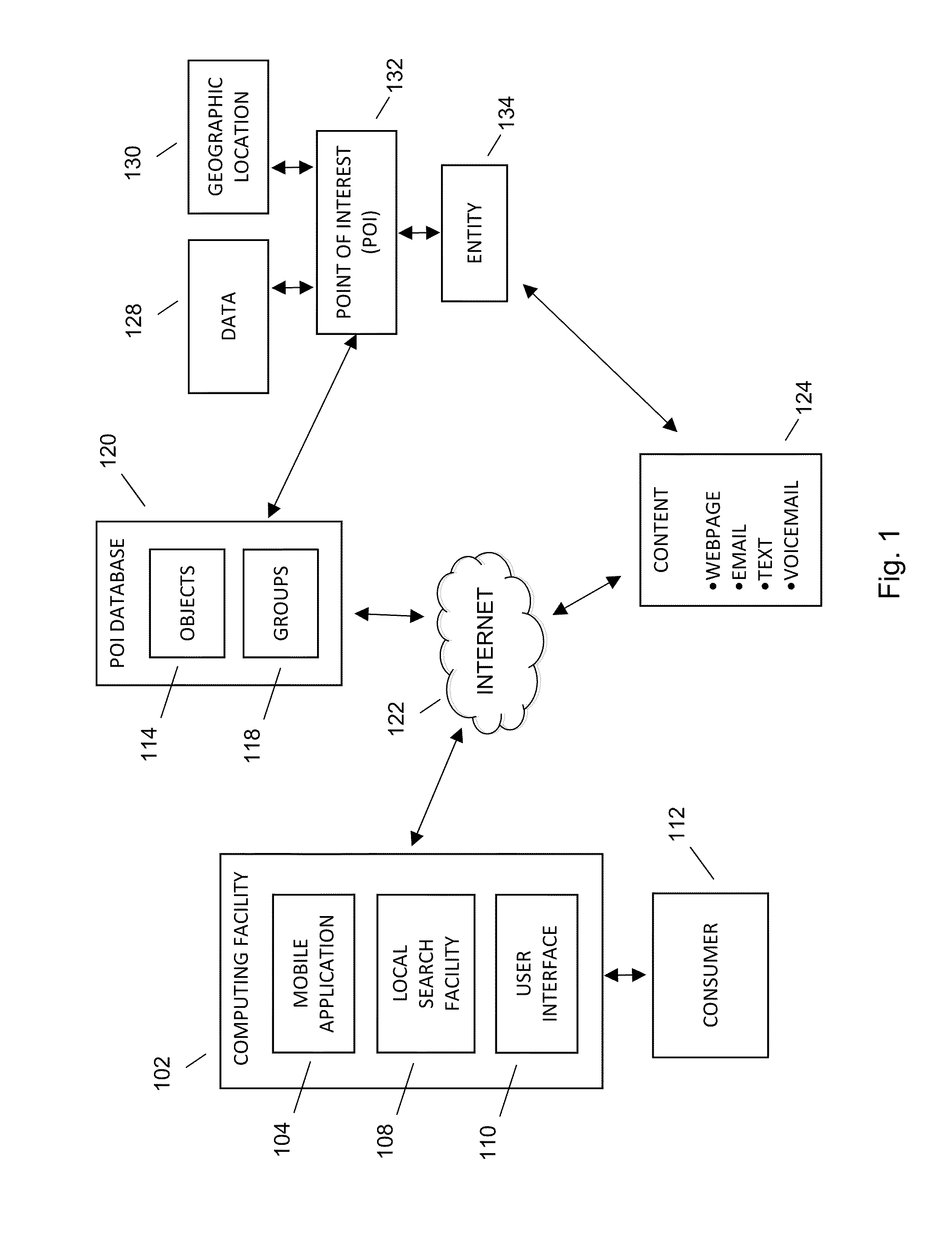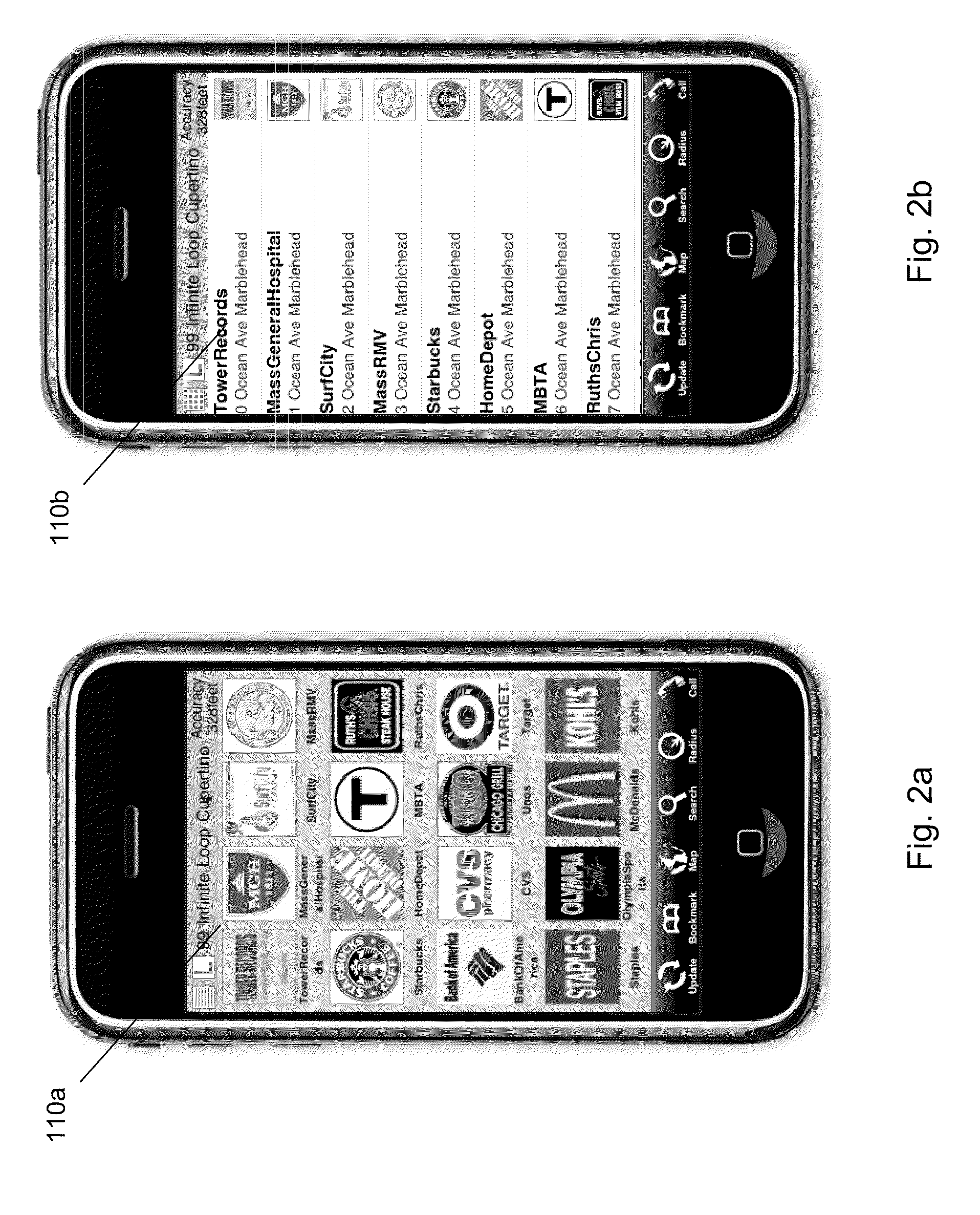Mobile local search platform
a mobile local search and platform technology, applied in the field of web-based local search, can solve the problems of affecting the return rate of customers, and affecting so as to reduce the use of the webpage, reduce the input, and increase the functionality of the mobile application.
- Summary
- Abstract
- Description
- Claims
- Application Information
AI Technical Summary
Benefits of technology
Problems solved by technology
Method used
Image
Examples
Embodiment Construction
[0023]The present invention may provide a consumer with market offerings through their mobile application device (e.g. their mobile phone) that are both more convenient for the consumer and more efficient for businesses. In an embodiment of the invention, when a customer walks down a particular street, the mobile application may display businesses on that street. If the customer sees a particular business of interest, they may click on that business and immediately see the website or mobile website for that business. The customer may then see the promotions, specials, services, and the like provided by that business. The mobile application may provide up to the minute information that may be easily generated and modified by the business by using existing technologies, such as HTML, CSS, JavaScript, and the like. The web application may allow the business to enhance existing webpages by embedding retail functionality in them. For example, a customer may see a loyalty card icon associ...
PUM
 Login to View More
Login to View More Abstract
Description
Claims
Application Information
 Login to View More
Login to View More - R&D
- Intellectual Property
- Life Sciences
- Materials
- Tech Scout
- Unparalleled Data Quality
- Higher Quality Content
- 60% Fewer Hallucinations
Browse by: Latest US Patents, China's latest patents, Technical Efficacy Thesaurus, Application Domain, Technology Topic, Popular Technical Reports.
© 2025 PatSnap. All rights reserved.Legal|Privacy policy|Modern Slavery Act Transparency Statement|Sitemap|About US| Contact US: help@patsnap.com



